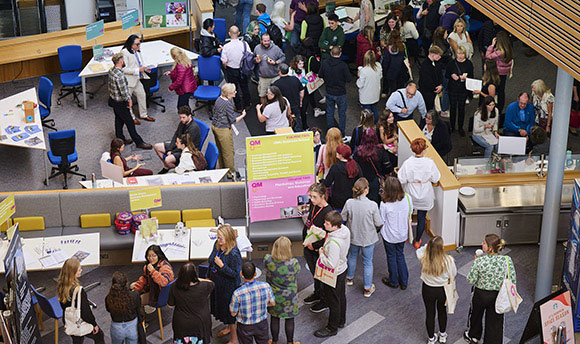QMU - Clinical Practice in Diagnostic Imaging 2: Learning Outcomes
Clinical Practice in Diagnostic Imaging 2: Learning Outcomes
Clinical Practice in Diagnostic Imaging 2 (CP2) is the continued development of general skills in routine radiography and fluoroscopy. The student integrates further into the multidisciplinary health care team and develops their interprofessional skills with staff, patients and carers. It is essential that the students critically reflects on the learning experiences during clinical placement and links theory to practice.
GENERIC LEARNING OUTCOMES
By the end of CP2, in addition to the ICP outcomes: the student will be able to:
- describe the type and specification of imaging equipment in use;
- make x-ray exposures safely whilst implementing radiation safety measures for patients and staff;
- discuss the capabilities and limitations of image recording systems used locally;
- demonstrate effective communication with carers, relatives and members of the multi-professional team;
- demonstrate an awareness for the special care required for patients with intravenous access devices and surgical drains;
- describe and demonstrate the use and routine care of oxygen and suction apparatus;
- describe location, types, distribution and checking procedure for drugs in the X-ray department.
- evaluate radiographs for abnormal appearances and suggest possible causes of abnormalities.
SPECIFIC LEARNING OUTCOMES – ROUTINE RADIOGRAPHY General Radiographic Techniques
By the end of CP2 the student will be able to:
demonstrate the ability to perform correctly and in their entirety, additional and alternate projections of:
- fingers and hand;
- wrist and carpal bones;
- forear;
- elbow;
- humerus;
- shoulder girdle;
- toes and tarsal bones;
- ankle;
- tibia and fibula;
- knee.
demonstrate the ability to perform correctly and in their entirety, additional and alternate projections of:
- femur and hip;
- pelvis and sacroiliac joints;
- thorax
- cervical spine;
- thoracic spine;
- lumbar spine;
- sacrum and coccyx.
discuss the reasons for the modifications to the routine techniques for the above procedures and identify the criteria for assessing the diagnostic quality of the resultant radiographs.
Radiography Using Contrast Media
- By the end of CP2 the student will be able to:
- identify and verify the expiry date and condition of contrast media;
- under supervision, prepare contrast media for administration and discuss contraindications for use;
- identify and discuss the indications and contraindications for intravenous urography and contrast examination of the biliary system, upper and lower gastrointestinal tracts;
- demonstrate the ability to produce, according to local protocol and the required diagnostic standard, radiographs for intravenous urography;
- demonstrate the ability to produce, according to local protocol and the required diagnostic standard, radiographs for contrast studies of the biliary system, upper and lower gastrointestinal tracts;
- assist in total patient care before, during and after contrast media examinations;
- initiate emergency procedures, according to local protocol, should an adverse reaction occur.
Image Processing
By the end of CP2, in addition to the ICP outcomes, the student will be able to:
- compare and contrast image processing systems.



